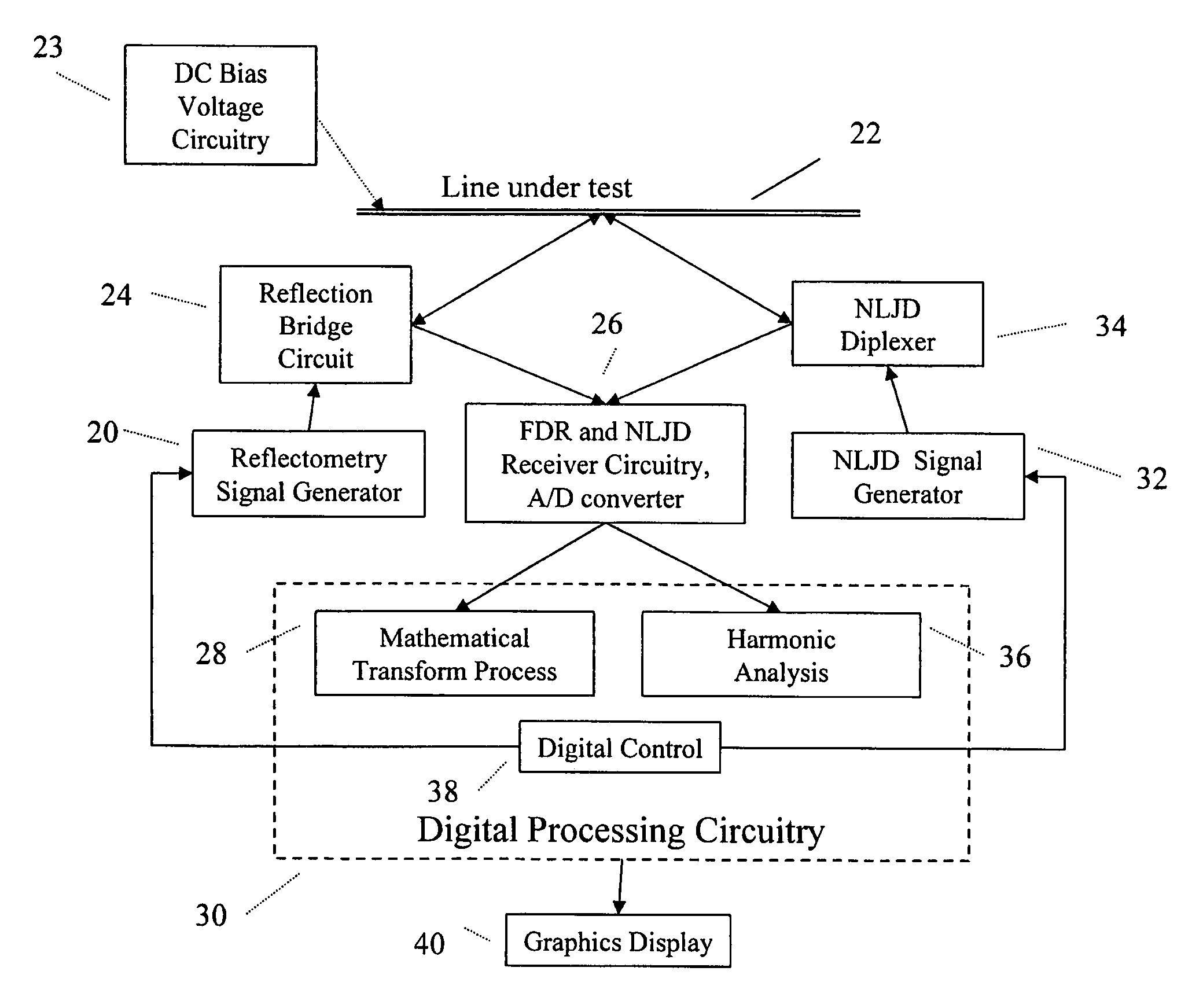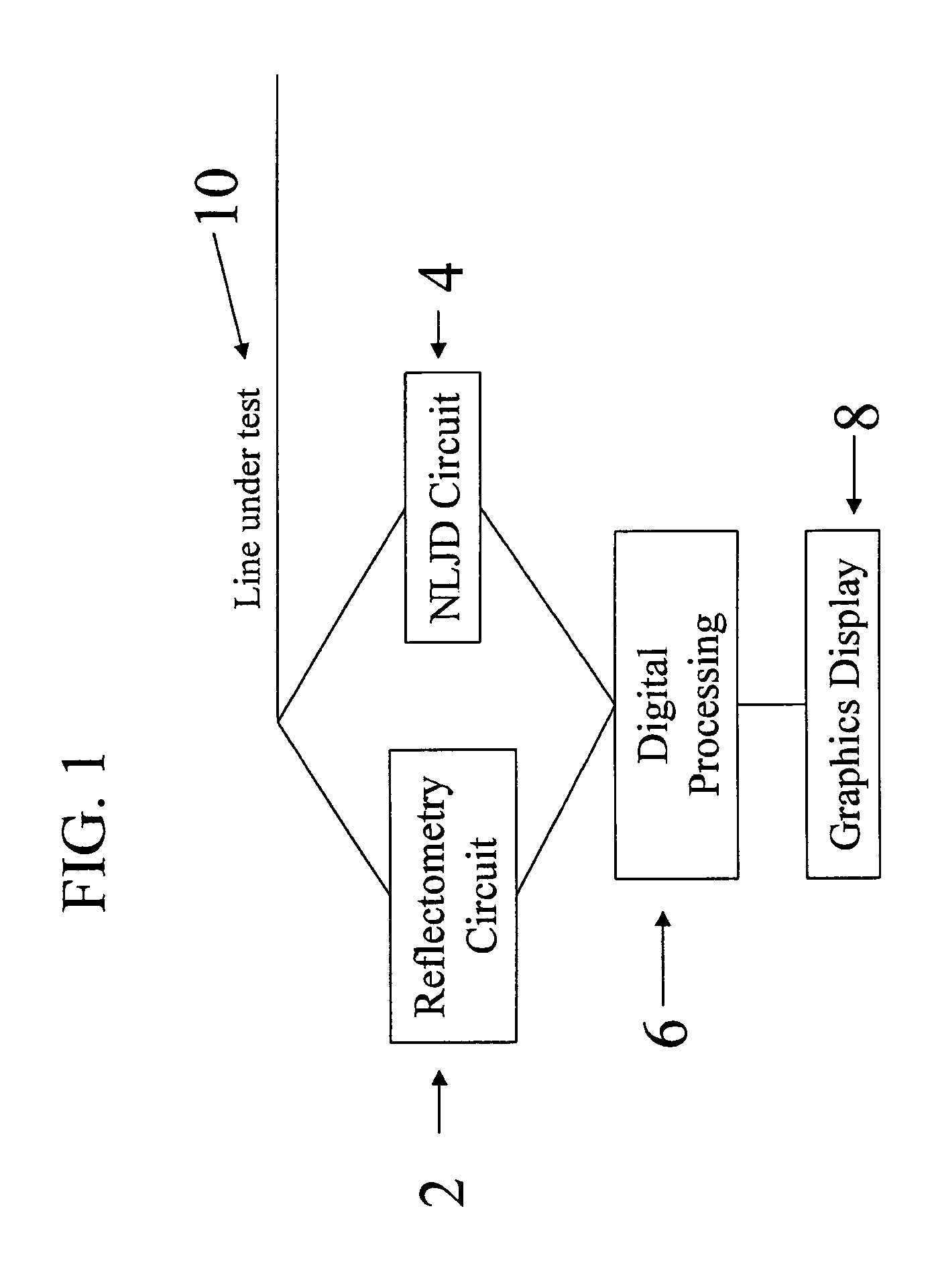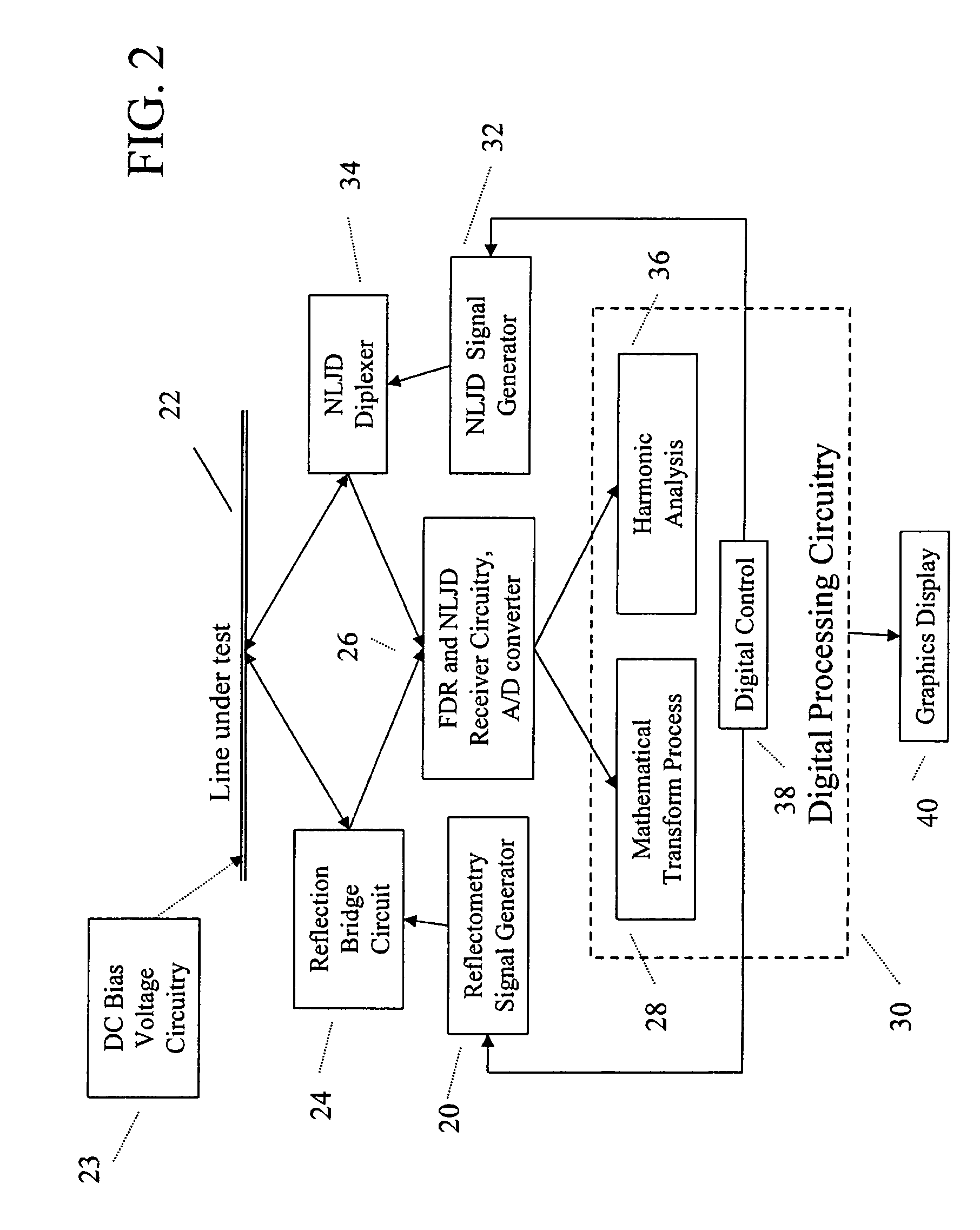Surveillance device detection utilizing non linear junction detection and reflectometry
- Summary
- Abstract
- Description
- Claims
- Application Information
AI Technical Summary
Benefits of technology
Problems solved by technology
Method used
Image
Examples
Embodiment Construction
[0023]Embodiments of the present invention are directed toward a method and apparatus for detecting the presence of concealed surveillance devices coupled to a transmission line using a combination of either time or frequency domain reflectometry analysis and non-linear junction detection processes. The combination of these processes reduces the time and effort required to inspect a transmission line for covert surveillance devices while improving the likelihood of locating any such devices.
[0024]In accordance with a preferred embodiment of the present invention, the first step in detecting a covert surveillance device coupled to a transmission line is to perform a time domain or frequency domain reflectometry operation to determine the presence and location of any reflecting discontinuities or impedance anomalies on the transmission line under test. Once the anomalies and discontinuities have been located, a non-linear junction detection operation is performed on the line to determ...
PUM
 Login to View More
Login to View More Abstract
Description
Claims
Application Information
 Login to View More
Login to View More - Generate Ideas
- Intellectual Property
- Life Sciences
- Materials
- Tech Scout
- Unparalleled Data Quality
- Higher Quality Content
- 60% Fewer Hallucinations
Browse by: Latest US Patents, China's latest patents, Technical Efficacy Thesaurus, Application Domain, Technology Topic, Popular Technical Reports.
© 2025 PatSnap. All rights reserved.Legal|Privacy policy|Modern Slavery Act Transparency Statement|Sitemap|About US| Contact US: help@patsnap.com



